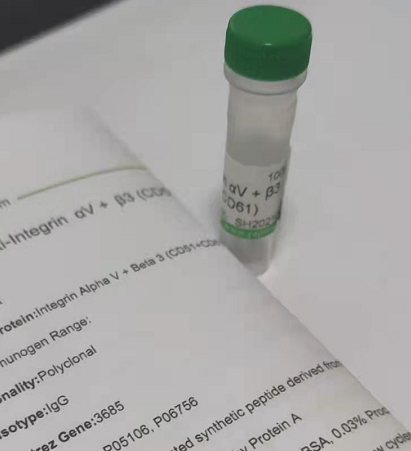| 產(chǎn)品編號(hào) | Ys-2377R |
| 英文名稱 | CNR2 |
| 中文名稱 | 鈣粘蛋白相關(guān)的神經(jīng)受體2抗體 |
| 別 名 | Cannabinoid receptor 2; Cannabinoid Receptor II; Cannabinoid receptor 2 macrophage; CB 2; CB-2; CB2; CNR2; CB2R; CNRII; CNR-2; CNR 2; CX 5; CX5; CNR2_HUMAN. |
| 抗體來(lái)源 | Rabbit |
| 克隆類型 | Polyclonal |
| 交叉反應(yīng) | Human, Mouse, Rat, |
| 產(chǎn)品應(yīng)用 | ELISA=1:5000-10000 IHC-P=1:100-500 IHC-F=1:100-500 Flow-Cyt=3μg/Test IF=1:100-500 (石蠟切片需做抗原修復(fù)) not yet tested in other applications. optimal dilutions/concentrations should be determined by the end user. |
| 理論分子量 | 40kDa |
| 細(xì)胞定位 | 細(xì)胞膜 |
| 性 狀 | Liquid |
| 濃 度 | 1mg/ml |
| 免 疫 原 | KLH conjugated synthetic peptide derived from human CNR2: 251-350/360 |
| 亞 型 | IgG |
| 純化方法 | affinity purified by Protein A |
| 緩 沖 液 | 0.01M TBS(pH7.4) with 1% BSA, 0.03% Proclin300 and 50% Glycerol. |
| 保存條件 | Shipped at 4℃. Store at -20 °C for one year. Avoid repeated freeze/thaw cycles. |
| 注意事項(xiàng) | This product as supplied is intended for research use only, not for use in human, therapeutic or diagnostic applications. |
| PubMed | PubMed |
| 產(chǎn)品介紹 | The cannabinoid delta-9-tetrahydrocannabinol is the principal psychoactive ingredient of marijuana. The proteins encoded by this gene and the cannabinoid receptor 1 (brain) (CNR1) gene have the characteristics of a guanine nucleotide-binding protein (G-protein)-coupled receptor for cannabinoids. They inhibit adenylate cyclase activity in a dose-dependent, stereoselective, and pertussis toxin-sensitive manner. These proteins have been found to be involved in the cannabinoid-induced CNS effects (including alterations in mood and cognition) experienced by users of marijuana. The cannabinoid receptors are members of family 1 of the G-protein-coupled receptors. [provided by RefSeq, Jul 2008]. Function: Heterotrimeric G protein-coupled receptor for endocannabinoid 2-arachidonoylglycerol mediating inhibition of adenylate cyclase. May function in inflammatory response, nociceptive transmission and bone homeostasis. Subcellular Location: Cell membrane. Cell projection, dendrite. Perikaryon. Localizes to apical dendrite of pyramidal neurons. Tissue Specificity: Preferentially expressed in cells of the immune system with higher expression in B cells and NK cells (at protein level). Expressed in skin in suprabasal layers and hair follicles (at protein level). Highly expressed in tonsil and to a lower extent in spleen, peripheral blood mononuclear cells, and thymus. PubMed:14657172 could not detect expression in normal brain. Expressed in brain by perivascular microglial cells and dorsal root glanglion sensory neurons (at protein level). Post-translational modifications: Constitutively phosphorylated on Ser-352; phosphorylation increases cell internalization and desensitizes the receptor. Similarity: Belongs to the G-protein coupled receptor 1 family. SWISS: P34972 |
我要詢價(jià)
*聯(lián)系方式:
(可以是QQ、MSN、電子郵箱、電話等,您的聯(lián)系方式不會(huì)被公開(kāi))
*內(nèi)容:









